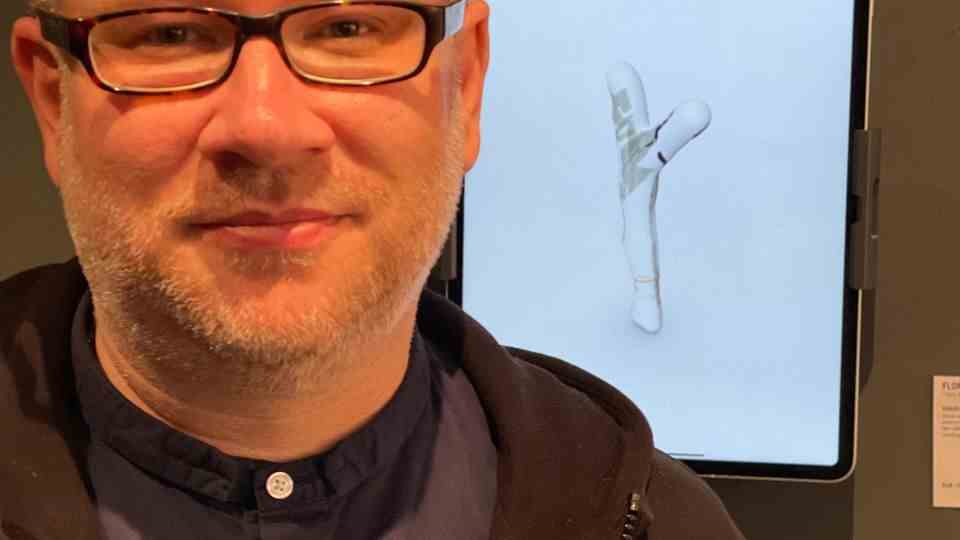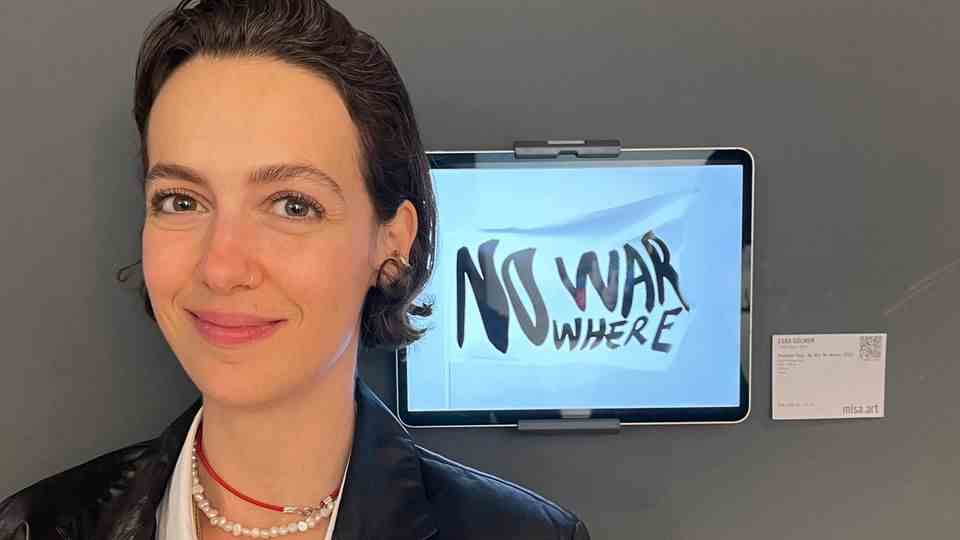Art in the blockchain is the new hype. But women in particular are afraid of digital art. It has many advantages.
“That was one of the monkeys,” says Florian Adolph and nods benevolently in the direction of a young man who returns the greeting. What others would find insulting is the accolade of a phenomenon that remains a mystery to many: NFT art. Instead of hanging paintings on the wall, the works exist somewhere on the web. Crazy? No, but different. And monkeys, newcomers learn that quickly, are the van Goghs of the new era. And can make their owners rich. But one after anonther.
It’s a May evening in the French street in Berlin. As part of misa.art POPUP 2022 For the Gallery Weekend, NFT works by five artists will be shown in a temporary art space. The special thing: they were all created on the iPad Pro. From traditional painter to 3D specialist or multimedia talent: For the “Created on iPad” NFT Collection, Florian Adolph, Evgen Copi Gorisek, Esra Gülmen, Kasimir and Ruohan Wang started working with tablets instead of brushes or pens.
That’s why there are no heavy and gilded picture frames hanging on the walls, but airy iPads. The new art is one you can touch. Where distances are strictly observed in conventional galleries, some of the artworks invite you to try them out. The screens of the iPads may be touched. Some of the works on display are even designed to interact with the viewer – like that of artist Adolph.
NFT art scares many
“Many are afraid of NFTs because they don’t understand it,” says the Frankfurt native, who is a pioneer of digital art. In his case, it becomes even more complicated than it already is for many. Adolph does AR-NFT drop. These are virtual sculptures that are not in a room, but can be viewed as augmented reality. With the sculptures, which are reminiscent of shells or porcelain, the boundaries between reality and 3D are blurred. If you want, you can even destroy your work of art and get a pile of broken pieces. Guaranteed unique.

The Frankfurt artist Florian Adolph proudly shows his digital sculpture. It can even break – at least digitally.
©Jens Maier
NFT are different from pictures above the sofa or objects on the sideboard. They exist on computers. Almost anything can become an NFT. A video, an audio file, a gif or even a PDF. Doesn’t sound very exclusive. Mainly because everything on the web could previously be duplicated at will. But with the new crypto technology, NFTs become the only works of art in the world that cannot be counterfeited. The files are assigned to the originator and the owner. The Kujaus of this world don’t stand a chance.
Angela Merkel once described the Internet as “uncharted territory”. NFT should therefore be science fiction. Not far from the Borchardt restaurant, where the former chancellor likes to eat schnitzel, a lesson is now taking place. Artists such as Adolph, Esra Gülmen, Evgen Copi Gorisek and Ruohan Wang stand in front of iPads and explain their art. Not only the haptic experience is new, but also how the works of art are created. Not analogue to then be transferred, but digital.
The works of art are created digitally
“I taught myself to do it myself,” says Adolph about the creation of his sculptures on the iPad. He doesn’t want to reveal which programs he works with, trade secrets. His art is technology driven. “I use the lidar scanner in the iPad Pro,” says the 45-year-old. This measures how long it takes light to reflect off objects. In this way, he can create a depth map of the room in which the user is currently located. This creates a unique augmented reality experience for the viewer. Creative work on the iPad has little in common with swinging a brush in a loft. Not even with the good old potter’s wheel. But not with blunt programming either. “It’s a creative process on the computer,” says Adolph. “And in my head.” With digital art, a new way of creative work is emerging.

Esra Gulmen makes direct reference to the Ukraine war in her iPad artwork. She has designed various flags. The message: no war.
©Jens Maier
The brave new world of NFT makes it difficult for women in particular. “More than 70 percent of digital art customers are men,” says gallery owner Anna Graf from misa.art. Terms like tokens, crypto and blockchain seem to have a corrosive effect on women. A problem. First, because art cannot do without women. Secondly, because men are doing the big bargaining right now – at least on paper. Which brings us back to the monkeys.
Bored monkeys make their owners rich
The Bored Apes Yacht Club is a digital art collection made up of 10,000 images of bored looking monkeys. Launched in 2021, it experienced a hype in the same year. The prices for the monkeys that can be traded digitally went through the roof. Eminem, Jimmy Fallon, Gwyneth Paltrow and Snoop Dogg – they are all monkey owners. At the beginning, one of the little pictures, which are like a Panini scrapbook, barely cost the equivalent of 200 euros. At the time, many thought it was too expensive. But now a monkey is rarely traded for less than 300,000 euros. Insanity.
The monkeys fit the zeitgeist. Art cannot be measured objectively. A painting that costs a lot is not automatically more artistically valuable than one that can be bought on the street. The hype has long gripped the analogue market. In 2017, $450 million was paid for the Salvator Mundi oil painting. It is disputed whether Leonardo da Vinci is actually the author. The most expensive work by a living artist is a rabbit figurine by Jeff Koons. Proud 91 million dollars were called for it. The monkeys are just the logical digital continuation. And above all: open to everyone.
Florian Adolph is a fan of the monkeys. “I have one myself and appreciate above all that a community has developed,” says the artist. Many of the owners share their own picture on Twitter or Instagram. For him, that is what makes the difference to analogue art. “Art used to be an elite club that met in galleries and museums,” he says. Today, thanks to NFT, this is happening on the Internet.
NFT do not end up in the depot
The fact that his own sculptures are not in a museum but are stored virtually in a database does not bother Adolph at all. “Most NFT owners that I know show their collection on social media.” There they are more accessible than in private collections or in the museum depot. “The museums are closed at night, the internet is not.”
There are still too few artists who deal with NFT and digital art. For years, digital art was ridiculed and dismissed as inferior in quality. Now it’s experiencing a boom. But not everyone who chooses a digital work of art now will become rich with it. It’s like the stock market. Supply and demand determine the price.
One of the enterprising artists of the 20th century, Picasso would probably have painted on the iPad. His art cost a small fortune during his lifetime. Adolph’s sculptures are affordable for everyone. The digital sculptures cost 150 euros each. All three were sold. Whether they bring wealth to the owner or just fun is open.

